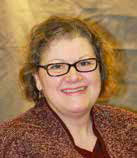As consumers increasingly are being asked to pay a larger share of their health bills, a coalition of insurers, pharmaceutical companies, and provider and consumer advocacy groups launched Thursday a new push for greater transparency regarding the actual costs of services.
The group includes AARP, Novo Nordisk, the National Consumers League, the Ambulatory Surgery Center Association, the National Council for Behavioral Health and Aetna.
Health care transparency, long a buzz word, means all consumers — whether they are covered by Medicare, work-based insurance or without coverage at all — have access to information enabling them to estimate accurately the cost of health services, and compare physician quality rankings and outcomes.
The initiative, “Clear Choices,” will add to private and government efforts already underway to get more such information to patients, including Medicare’s Physician Compare, and the Health Care Cost Institute’s ‘Guroo,’ which culls data from private insurers to provide average prices regionally.
The group’s first priority is advancing the Medicare doctor payment legislation pending in the Senate because it includes a provision requiring Medicare to release for broader use a substantial amount of data on claims at the provider level.
“We have data, but it’s a random sample across entire nation. So you can’t use it to do what Clear Choices and other organizations want to do — to analyze the cost and quality of individual providers within the Medicare program,” said Francois de Brantes, executive director of the Health Care Incentives Improvement Institute, a nonprofit group that studies and promotes payment reform. It is not affiliated with the initiative.
Another priority is to push states and the federal government to enforce the part of the health care law that requires exchange plans to give consumers very specific information about provider networks and covered drugs.
“Insurance company rates are negotiated, so each patient would be subject to a different rate,” said Caroline Steinberg, vice president of trends analysis at the American Hospital Association, which is not involved in the campaign. That negotiated rate means a consumer will likely pay less money for an in-network doctor or hospital. But they need a way to find out that information.
Some states already have moved in this direction.
For example, Connect for Health Colorado, Colorado’s state exchange, provides a tool for shoppers to compare insurers based on what drugs are covered, and what providers are in network.
The coalition’s most lofty goal is to change the health system so that patients can know upfront the cost of a medical procedure. This is a complicated proposition because so many components – among them facility-use fees, physician charges, deductibles and co-payments – are factored into the bill a patient eventually receives.
Wanda Filer, a physician based in York, Penn., says even health care providers are often confused by pricing.
“Physicians don’t even know where to refer people and they don’t know what to tell them,” said Filer, who is on the board of directors of the American Academy of Family Physicians, which is part of the coalition.
Representatives of Clear Choices have framed the campaign as being simple – if a consumer can get a sticker price for a television, so should they for health care. But others say this is much harder than it might appear.
“It’s like asking what the price [will be] for the repair of a leaky roof before the roofer has figured out the cause of the leak,” said Mark Pauly, professor of health care management at the University of Pennsylvania. “It’s harder for the insurer to tell you what you will end up paying until you have precise information on what services you will be using—which patients (and, for that matter, doctors) do not always know in advance.”
The group’s other objectives include:
– Improving quality measures for doctors and hospitals so that patients will be armed with more comparative information.
– Requiring hospitals to be clearer regarding what may or may not be included in their cost estimates for care.
– Creating better tools for consumers to make medical decisions based on price, quality and safety of medical services.
Kaiser Health News (KHN) is a national health policy news service. It is an editorially independent program of the Henry J. Kaiser Family Foundation.

